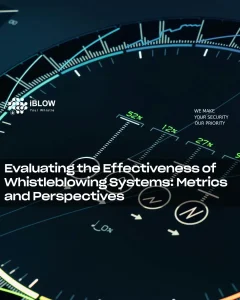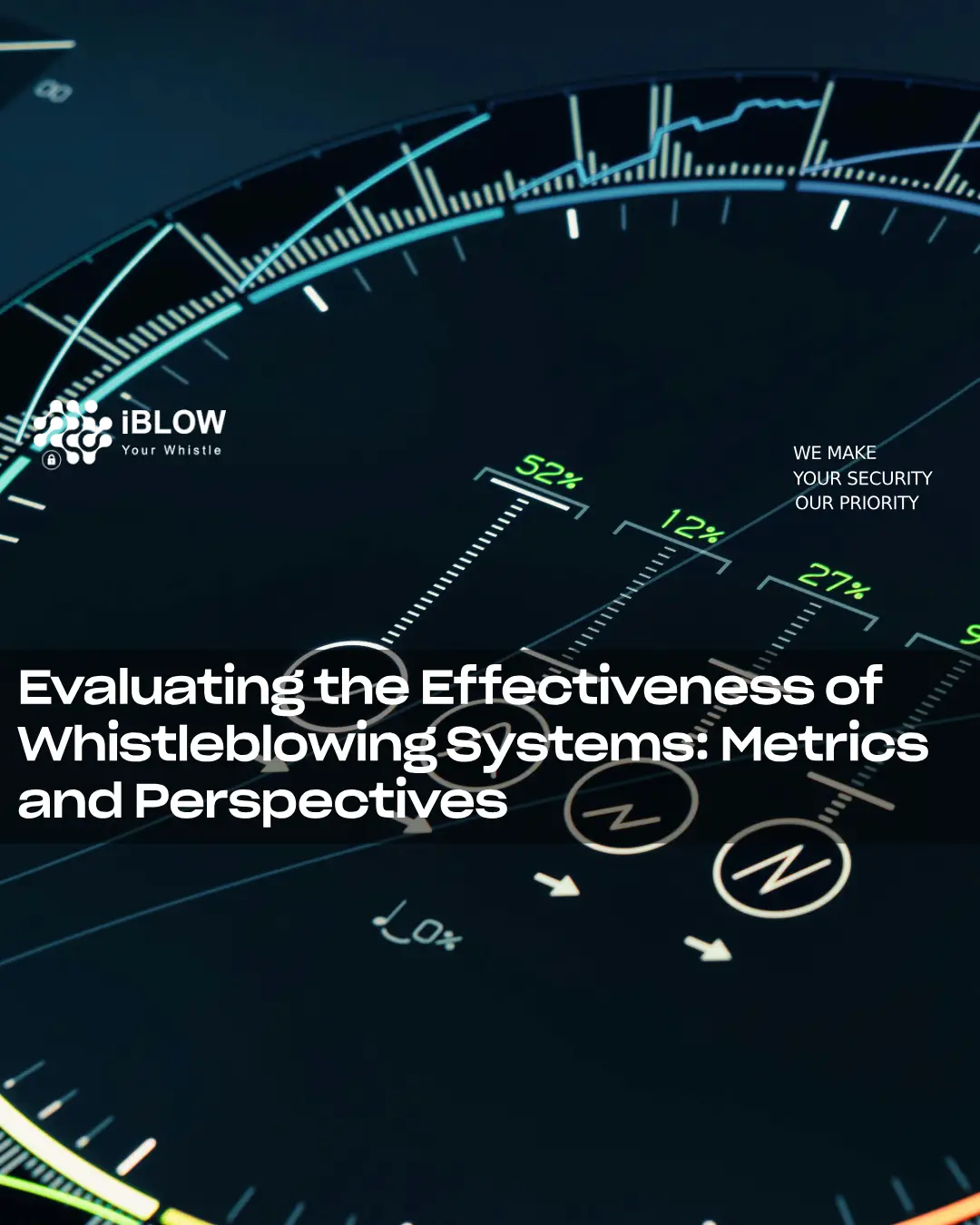
Continuous evaluation is essential to guarantee the effectiveness and trust of corporate whistleblowing channels.
Effectiveness of Whistleblowing Systems
The effective implementation of whistleblowing systems is a fundamental step in guaranteeing integrity, ethics and compliance within organisations.
However, the mere existence of these channels is not enough: it is essential to continually evaluate their effectiveness to ensure that they really fulfil their purpose.
In this article, we explore evaluation methodologies, key metrics and strategies for the continuous improvement of whistleblowing mechanisms.
The Importance of Evaluating Whistleblowing Systems
Raising the effectiveness of whistleblowing systems protects whistleblowers, encourages transparency and allows organisations to detect and correct irregularities internally.
Evaluating its performance not only helps to identify flaws, but also strengthens the confidence of employees and stakeholders in the system.
A lack of monitoring can result in under-utilisation, poor management of whistleblowing or, even worse, retaliation against whistleblowers.
Evaluation methodologies
The evaluation of a whistleblowing system must be multidimensional, combining quantitative and qualitative analyses.
The most common methodologies include:
1. Internal and External Audits
Periodic audits, conducted by internal teams or independent organisations, help to check that the system is working properly, that it complies with applicable legislation (such as the European Whistleblowing Directive), and that complaints are being managed efficiently and ethically.
2. User Satisfaction Surveys
Assessing the perception of users – especially employees – is crucial.
Anonymous questionnaires can reveal whether employees trust the system, find it accessible and feel safe using it.
3. Analysing processes and results
Collecting data over time and analysing the course of complaints (from submission to resolution) makes it possible to understand the practical effectiveness of the system.
You can also identify bottlenecks in the process or areas with a higher incidence of irregularities.
Key Metrics for Evaluation
Selecting the right metrics is essential for effective analysis.
Metrics must be relevant, measurable and comparable over time.
1. Number of Reports Received
A very low number may indicate a lack of trust or unfamiliarity with the system.
On the other hand, a sudden increase could signal internal problems or improvements in the channel’s communication.
2. Anonymous Reporting Rate
The proportion of reports made anonymously can indicate the level of fear of retaliation.
A high rate can point to an unsafe working environment or a lack of trust in management.
3. Average Resolution Time
This metric indicates the efficiency of the system.
Long resolution times can damage user confidence and jeopardise the integrity of investigations.
4. Case opening vs. closing rate
It is important to ensure that the majority of cases are properly investigated and closed, with action taken when necessary.
5. Percentage of Confirmed Reports
Refers to complaints that resulted in corrective or disciplinary action.
A value that is too low can indicate problems in screening or investigation, while a value that is too high can raise questions about subjective validation criteria.
6. Post-report feedback
Offering whistleblowers the chance to evaluate their experience, even anonymously, is a powerful tool for continuous improvement.
Strategies for Continuous Improvement
The evaluation of effectiveness is not the end, but the beginning of a cycle of improvement.
Based on the data collected, organisations must implement corrective measures and reinforce good practices.
1. Communication and Awareness Raising
Many employees don’t use whistleblowing channels simply because they are unaware of their existence or are afraid of reprisals. Awareness campaigns and training are essential.
2. Regular review of policies
Whistleblowing policies should be reviewed regularly to ensure their legal and operational suitability. Changes in the European legal context require periodic updates.
3. Confidentiality and Protection Guarantee
Trust is the key element. Ensuring total confidentiality and protection against retaliation strengthens the legitimacy of the system and encourages its use.
4. Training researchers
The teams responsible for screening and investigating complaints must be properly trained, with legal, technical and ethical competences. This guarantees fair and credible investigations.
5. Integration with the Risk Management System
Whistleblowing should not be isolated. It must be integrated with compliance, risk management and internal auditing systems, creating a complete corporate integrity ecosystem.
Complementary Maturity Indicators
In addition to operational metrics, organisations should assess the degree of maturity of their system. Here are some signs of maturity:
-
Leadership involvement: management clearly communicates support for the system.
-
Open organisational culture: employees feel encouraged to report irregularities.
-
Transparency of results: aggregated reports and measures taken are shared.
-
Collection and use of feedback: the data collected is used to improve the system.
-
Independent monitoring: involvement of external auditors or ethics boards.
Real Cases: The Impact of Evaluation
Companies that have implemented robust evaluations of their whistleblowing systems have seen concrete results:
-
Siemens overhauled its system after corruption scandals and introduced a dashboard of detailed metrics. Since then, the number of reports has increased and the company’s reputation has improved.
-
Novartis has released data on the performance of its channels in public reports, increasing transparency and stakeholder confidence.
Conclusion
Evaluating the effectiveness of whistleblowing systems is an ongoing and indispensable process.
Only through well-defined metrics, rigorous methodologies and improvement strategies can we guarantee that whistleblowing channels really fulfil their function of protecting employees, preventing damage and promoting organisational integrity.
Organisations that invest in actively monitoring their whistleblowing mechanisms not only avoid legal and reputational risks, but also build more ethical, resilient and sustainable corporate cultures.
Be part of the conversation that is shaping the future of work! Book a meeting!
See other articles that may be of interest to you.
We hope you enjoyed this article.
Thank you!
Constantino Ferreira
iBlow.eu
![]() Liked? Subscribe to receive future articles
Liked? Subscribe to receive future articles
Published: 2025.05.21

